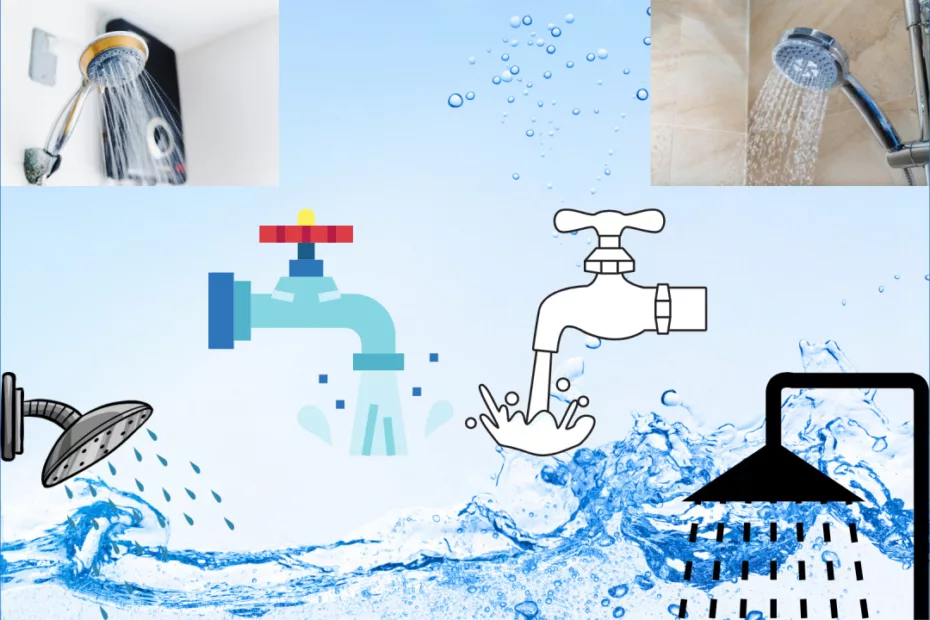Real estate investors often engage in property renovations and upgrades to enhance the value and appeal of their investment properties. When it comes to bathroom renovations, a common task undertaken by landlords is to replace a two-handle shower valve and the faucet.
A two-handle shower valve is a plumbing fixture that controls the flow of the water, as well as the water temperature for a shower using separate hot and cold water handles or knobs. Upgrading an old or malfunctioning shower valve can improve the functionality and aesthetics of a bathroom, making it more attractive to potential tenants or buyers.
In this article, we will explore how real estate investors may approach the process of replacing a two-handle shower valve, including the considerations, steps, and potential costs involved. Whether for a fix-and-flip property or a rental property, a well-executed shower valve replacement can be a worthwhile investment for real estate investors seeking to improve their properties and increase their potential return on investment.
Step-by-Step Instructions for Replacing a Two-Handle Shower Valve
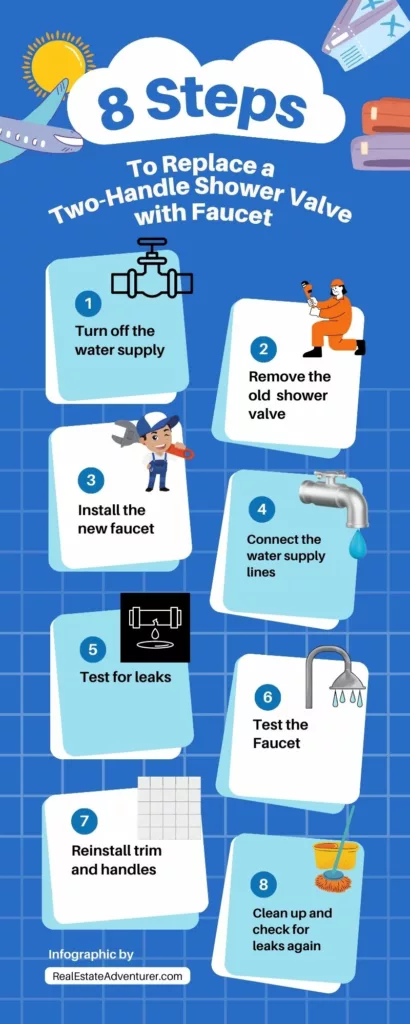
Replacing a two-handle shower valve can be a complex task that requires some plumbing knowledge and tools. Here is a general guide on replacing a two-handle shower valve, but as a real estate investor, you should always hire a professional.
Materials and Tools Needed
- New two-handle shower valve
- Pipe wrench
- Plunger
- Plumber’s Teflon tape
- Adjustable wrench
- Screwdriver
- Plunger
Steps
Replacing a two-handle shower valve with a new faucet can be a complex plumbing task that requires skill and experience. It’s recommended to hire a professional plumber if you’re not experienced in plumbing work. However, if you feel confident in your DIY skills and want to give it a try, here are general steps on how to replace a two-handle shower valve with a faucet:
1. Turn off the water supply
The first step is to shut off the water supply to your home to prevent any flow from the water line during the installation process. You may need to drain the water from the pipes by opening faucets and valves in the area.
2. Remove the old two-handle shower valve
Depending on the type of valve, you may need to remove the shower handle, trim, and escutcheon plate (cover plate) to access the valve. Use a wrench or pliers to disconnect the water supply lines and remove the old valve.
3. Install the new faucet
Follow the manufacturer’s instructions to install the new faucet. This may involve connecting the new handles, trim, and escutcheon plate and attaching the new faucet to the valve.
4. Connect the water supply lines
Once the new faucet is installed, connect the water supply lines to the appropriate connections on the new faucet. Use wrenches or pliers to tighten the connections securely, but be careful not to overtighten and damage the threads.
5. Test for leaks
Before turning on the water supply, inspect all connections for leaks. If you notice any leaks, tighten the connections further or use plumbing tape or sealant to prevent leaks.
6. Turn on the water supply and test the faucet
Once you’re confident that all connections are secure and leak-free, turn on the main water supply and test the new faucet. Check for proper water flow and temperature control, and make any adjustments if necessary.
7. Reinstall trim and handles
Once the faucet works correctly, reinstall the trim and handles according to the manufacturer’s instructions. This may involve tightening screws or attaching decorative covers.
8. Clean up and check for leaks again
Inspecting all connections for leaks one final time is a good idea. If everything looks good, clean up the work area, and you’re done!
It’s important to note that the steps and requirements for replacing a two-handle shower valve with a faucet may vary depending on the type of valve and faucet you’re installing and the configuration of your plumbing system. It’s always best to consult the manufacturer’s instructions and seek professional help if you’re unsure about any aspect of the installation process. Improper installation can result in a leaking shower valve, water damage, or other plumbing issues, so it’s essential to ensure that the replacement is done correctly to ensure the safety and functionality of your shower system.
What is a Two-Handle Shower Valve?
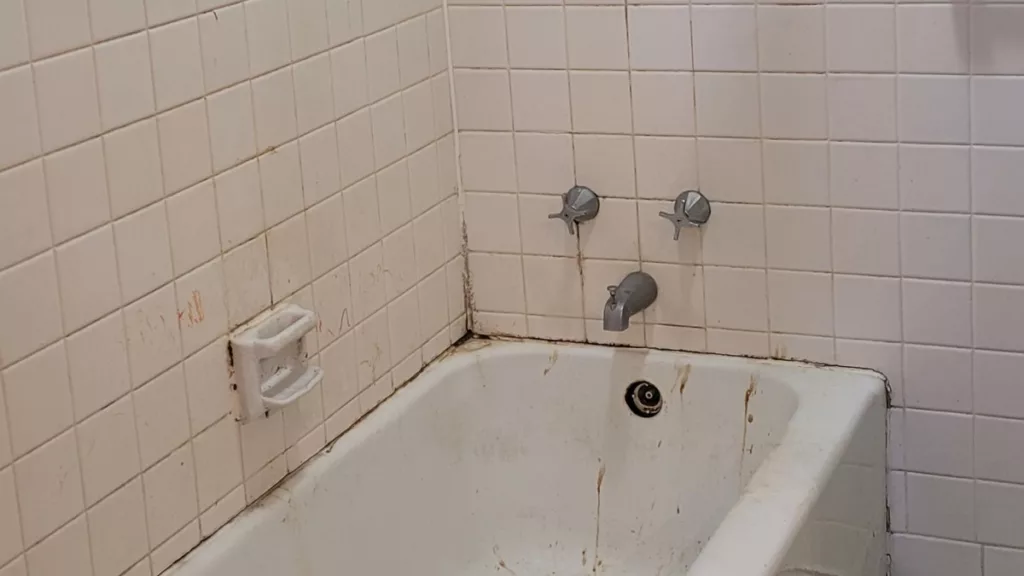
A two-handle shower valve is a plumbing fixture that controls the flow and temperature of water to the shower head. As the name suggests, it has two separate handles or knobs, one for controlling the hot water and one for controlling the cold water. By adjusting the position of these handles, users can control the flow rate and temperature of the water to achieve the desired showering experience.
Where Will You Find Two-Handle Shower Valves?
Two-handle shower valves are typically installed in older or traditional shower systems, where separate hot and cold water supply lines are available. They are also commonly used in properties with existing plumbing setups that are not easily modified to accommodate a single-handle shower valve, which is a more modern design that combines hot and cold water control in a single handle.
Types of Two-Handle Shower Valves
Two-handle shower valves can come in different types, such as compression valves, cartridge valves, or ceramic disc valves, which determine how the handles operate and control the flow and temperature of the water. Depending on their type and design, these valves may require different installation and maintenance procedures.
Two-Handle Shower Valves Have Been Replaced
In recent years, single-handle shower valves have become more popular due to their ease of use and versatility. However, two-handle shower valves are still widely used in many homes and properties. They may require replacement or repair over time due to wear and tear, damage, or the need for updates to comply with building codes or meet the preferences of property owners or tenants.
Is a Two-Handle Shower Valve Legal

Building codes and regulations related to plumbing can vary by location, and it’s essential to consult with local building authorities or a qualified professional plumber to determine the legality and compliance of plumbing fixtures, including two-handle shower valves, in a specific area.
The Uniform Plumbing Code (UPC) requires all shower and tub-shower combinations in all occupancies shall have individual shower control valves of the water pressure balance or the thermostatic mixing valve type. This is to prevent serious harm from hot water scalding. Two-handle shower valves are not pressure balance or thermostatic mixing valves and therefore do not meet the UPC requirements.
Are Two-Handle Shower Valves Ever Allowed
There are a few exceptions to the UPC requirement. For example, two-handle shower valves installed before the UPC requirement was implemented are grandfathered in. Two-handle shower valves used in conjunction with a pressure balance or thermostatic mixing valve are also allowed.
Older two-handle shower valves may be allowed in some regions or jurisdictions if they meet certain safety and performance requirements. In others, they may be considered outdated or non-compliant with current codes. Some areas may require newer types of shower valves, such as a single-handle pressure-balancing or thermostatic valve, designed to provide enhanced safety and efficiency features.
It’s crucial to comply with local building codes and regulations when it comes to plumbing work, including installing, replacing, or repairing shower valves, to ensure the safety and functionality of the plumbing system in a property. Failure to comply with local codes and regulations can result in fines, penalties, and potential legal liabilities. Therefore, it’s always best to consult with local authorities or seek professional help from a qualified plumber to ensure compliance with applicable laws and regulations.
What are the Benefits of Upgrading a Two-Handle Shower Valve?
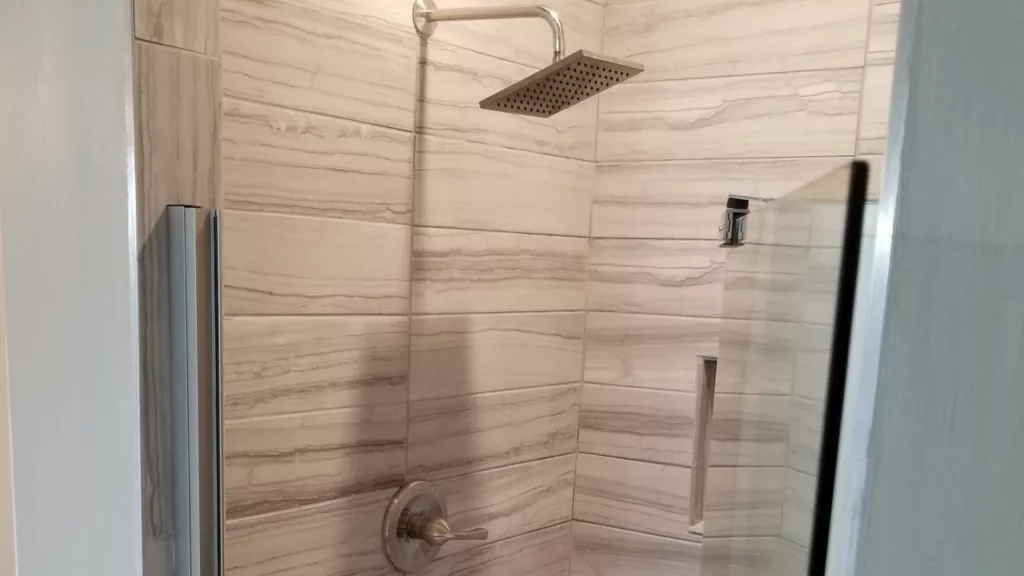
Repair and Maintenance
Over time, shower valves can wear out or become damaged due to regular use, mineral buildup, or corrosion. This can result in a leaky shower faucet, difficulty controlling water flow and temperature, and wasting gallons of water. If your shower valve is not functioning properly despite attempts at repair, it may be time for a new shower valve.
Cosmetic Upgrades
If you have an older two-handle shower valve and want to update your bathroom with a more modern and convenient design, you may choose to replace it with a single-handle valve. Single-handle valves are popular for their ease of use. They allow you to control the water flow and temperature with a single lever, offering more convenience and versatility in your shower experience.
Upgrading your shower valve can be a part of a larger bathroom renovation project aimed at improving the aesthetics and value of your property. A new, stylish shower valve can enhance the overall appearance of your bathroom and make it more attractive to potential buyers or tenants. It can also add value to your property by offering updated features and functionality.
Functional Upgrades
The two-handle valve uses an older compression faucet. A compression faucet is a traditional faucet that uses a compression mechanism to control water flow. It is one of the oldest and simplest types of faucets, and it consists of several basic components, including a handle, a stem, a valve seat, and a washer.
When the handle of a compression faucet is turned, it raises or lowers a stem connected to a washer. When the stem is raised, it allows water to flow through the faucet; it shuts off the water flow when lowered. The washer is pressed against the valve seat to create a seal and prevent water from flowing when the faucet is closed.
Compression faucets are relatively straightforward and easy to understand, but they can require more maintenance than other faucets. Over time, the washer can wear out and result in dripping or leaking, which may require replacement. Compression faucets are less common in modern plumbing due to their tendency to develop leaks and the availability of more advanced faucet designs with improved durability and ease of use, such as a shower cartridge, ball, and ceramic disc faucets. However, they may still be found in some older homes or as antique fixtures.
With a modern faucet, you can replace internal parts lowering maintenance costs. For example, a new cartridge can be inserted into the valve when an old cartridge wears out.
Compliance and Building Codes
If you have a two-handle shower valve that is not grandfathered in, you must replace it with a pressure balance or thermostatic mixing valve to comply with the UPC. You can find these valves at most plumbing supply stores.
Types of New Valves

There are primarily two different types of shower valves in use today; pressure balance valves and thermostatic mixing valves. Both control the flow and temperature of water in a shower.
Pressure Balance Valves
A pressure balance valve helps maintain a consistent balance between hot and cold water pressures to regulate the water temperature. It automatically adjusts the water flow to compensate for changes in hot or cold water pressure, ensuring the water temperature remains relatively constant. This type of valve is designed to prevent sudden fluctuations in water temperature, which can help protect against scalding or discomfort from extremely hot or cold water.
Thermostatic Mixing Valves
A thermostatic mixing valve blends hot and cold water to achieve and maintain a specific water temperature set by the user. It uses a thermostatic element that reacts to changes in water temperature to regulate the water flow and maintain the desired temperature. This type of valve allows for precise temperature control, typically with separate controls for water flow rate and temperature.
A thermostatic mixing valve will enable the user to set and maintain a specific water temperature according to their preference. Thermostatic mixing valves often have built-in safety features, such as scald protection, which can help prevent water from getting too hot and causing burns or scalds.
Which Valve Type is Best
Both pressure balance valves and thermostatic mixing valves are used to ensure safe and comfortable showers by regulating water temperature and preventing sudden fluctuations. The choice between the two depends on factors such as desired temperature control, safety features, complexity, and budget, and it’s recommended to consult with a qualified plumber or contractor to determine the right kind of shower valve for your specific needs.
Benefits of a New Valve
Here are some of the benefits of using a pressure balance or thermostatic mixing valve:
- They prevent scalding by automatically mixing hot and cold water to a safe temperature.
- They are more durable than two-handle shower valves and are less likely to leak.
- They are easier to use and clean.
If you are concerned about scalding or are looking for a more durable and easy-to-use shower valve, I recommend upgrading to a pressure balance or thermostatic mixing valve.
What Does it Cost to Replace a Two-Handle Shower Valve?
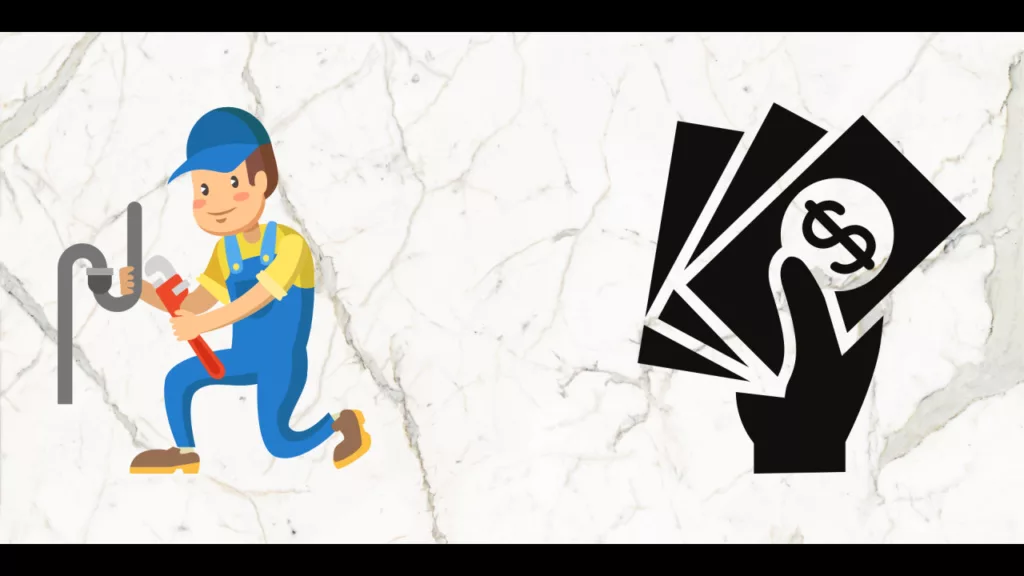
The tools and parts needed to replace the old shower valve, faucet body, and all shower faucet parts can be found at most home improvement stores or a plumbing supply store. You can get everything you need with a quick trip to home depot.
The cost to replace a two-handle shower valve varies depending on the type of valve, the installation’s complexity, and the valve’s location. Generally, you can expect to pay between $150 and $675 for a shower valve replacement.
Here is a breakdown of the costs involved in replacing a two-handle shower valve:
Part Costs
The cost of the new valve will vary depending on the type of valve you choose. Pressure balance and thermostatic mixing valves are typically more expensive than two-handle shower valves.
Labor Costs
The cost of labor will vary depending on the complexity of the installation. The labor cost will be higher if the valve is located in a difficult-to-reach area.
Miscellaneous Costs
Additional costs may be associated with the replacement, such as disposal of the old valve and other materials.
If you are considering replacing your two-handle shower valve, I recommend getting quotes from several plumbers to understand the total cost.
Conclusion
A two-handle shower valve is a traditional plumbing fixture used to control the flow and temperature of water in a shower. While they are still commonly found in older or existing plumbing systems, they may not comply with current building codes and regulations, such as the Uniform Plumbing Code (UPC), which requires pressure balance or thermostatic mixing valves for safety reasons. However, there are exceptions for grandfathered valves or when used in conjunction with a pressure balance or thermostatic mixing valve.
Upgrading to a pressure balance or thermostatic mixing valve offers several benefits, including increased safety, durability, and ease of use. The cost of replacing a two-handle shower valve will vary depending on the type of valve, installation complexity, and location. Still, consulting with local authorities or professional plumbers is essential to ensure compliance with applicable laws and regulations.
If you are considering replacing your two-handle shower valve, obtaining quotes from multiple plumbers and understanding the costs associated with the replacement, including part costs, labor costs, and miscellaneous costs, will help you make an informed decision. Ultimately, ensuring the safety and functionality of your plumbing system by complying with local codes and regulations is crucial when upgrading or repairing your shower valve.
